DNA
Latest
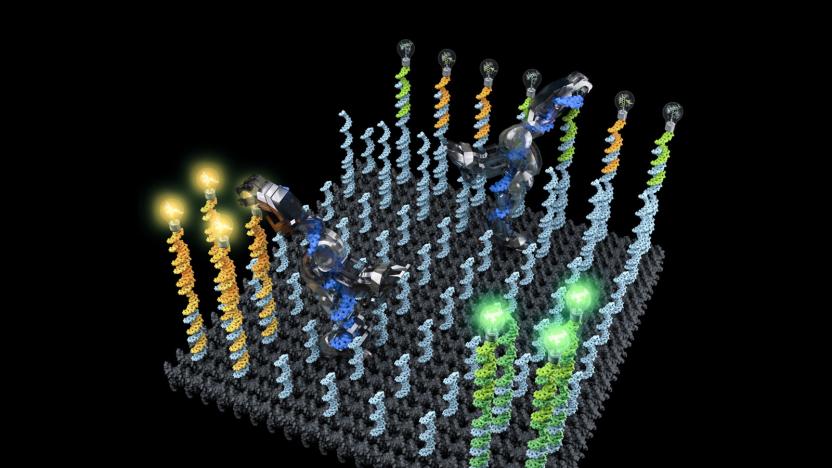
DNA 'robots' could sort molecules in your blood
Robots are already good at sorting things, so wouldn't it be nice if they could sort things out on a much smaller scale? They might soon. Caltech researchers have developed a 'robot' made from a single DNA strand that autonomously picks up molecules and moves them to specific places. It certainly doesn't look like a machine (what you're seeing above is merely representative), it behaves like one. Each segment is a collection of nucleotides that automatically performs a specific task: one segment tells the bot where to go, while separate limbs help it move around and grab molecules.

Researchers use encryption to keep patients’ DNA private
There are a lot of valid security concerns when it comes to genetic testing and keeping your genome under wraps. But researchers at Stanford University have figured out a way to keep the vast majority of your genomic data hidden while looking for disease-associated mutations. The work was recently published in Science.
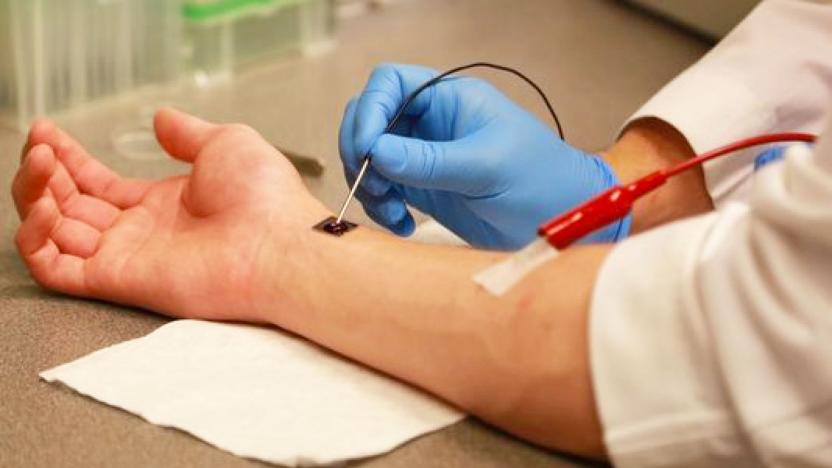
Fingernail-sized chip can repair damaged tissue in seconds
A new device can begin repairing damaged organs in seconds, heralding a major breakthrough for life-saving medicine. Developed at Ohio State University, the technology known as tissue nanotransfection (TNT) uses a small coin-sized silicon chip that "injects" genetic code into skin cells, converting them from one type to another.

Genetic engineering creates an unnaturally blue flower
Blue flowers are rare in nature, and for good reason: the color is usually the result of mutations and quirks of acidity levels rather than an actual blue pigment. That makes genetically engineering a blue flower tricky, since you can't just make a straightforward tweak and expect a garden full of unnatural hues. Scientists have just managed a breakthrough, though. They've produced the first truly blue chrysanthemum (above) by splicing in genes from two naturally blue flowers, the butterfly pea and Canterbury bell. The modifications shifted the plant's acidity level, turning normally reddish pigments to the blue you see above.

Yeast could hold the key to custom-built DNA
Scientists have been playing with DNA for a long time, but now researchers are taking things a step further by building DNA from scratch in a bid to conquer life's blueprint. An international team of 11 labs from four continents are working together to "rewrite" the yeast genome, a project which could reveal the hidden rules that govern the structure of all living things. The controversial work, headed up by New York University, aims to enable scientists to create custom-made DNA codes. These could then be placed into living cells, changing how they function and giving valuable insight into disease. Much further down the line, scientists may even be able to create entirely new organisms. The right adjustments could also make yeast create new, efficient biofuels.

Helix wants to build a marketplace for your DNA
There are secrets buried deep within our genetic code, and more than a few companies that want to help you learn them. Helix believes that the gaggle of startups vying for your DNA have a problem: they all need an individual sample to use. That's why the company is positioning itself as a marketplace where you take a single DNA swab, and then it shares the information with whoever you choose.
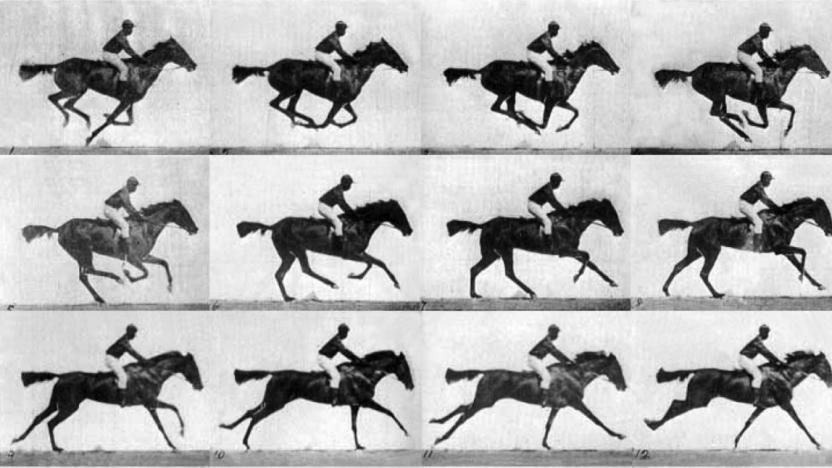
Researchers encode a movie onto living bacteria
Forget USB drives and the cloud -- what if you could carry every bit of data you've ever used on your skin? That's the long-term goal of researchers at Harvard Medical School, who have stored a video in the DNA of bacteria. It's the first time a video has been recorded into living cells, as opposed to synthetic material. The team inserted a short animated image of 'The Horse in Motion' (one of the earliest moving images ever created) into E. coli, using gene-editing system CRISPR. The movie was split into five frames, and each frame chopped into single-colored pixels. They then created DNA codes corresponding to each color and strung them together. Each bacterium carried snippets of the video stored in their DNA, and when taken together, the scientists were able to retrieve and reconstruct the pieces to play the video.

Scientists revive an extinct virus using off-the-shelf DNA
It's no longer far-fetched to synthesize a basic organism. However, a team of researchers has taken that work one step further. They recently reconstituted and reanimated an extinct virus, horsepox, using DNA they'd ordered via mail. The team stitched together multiple gene fragments (each with about 30,000 base pairs) into the complete 212,000-pair horsepox genome and inserted it into cells already infected with a different pox, bringing the inanimate virus to life. It's clever work, especially given the relative complexity of a pox virus compared to earlier efforts, but it's also a double-edged sword -- it could at once provide a breakthrough in medical research and pose a potential threat.
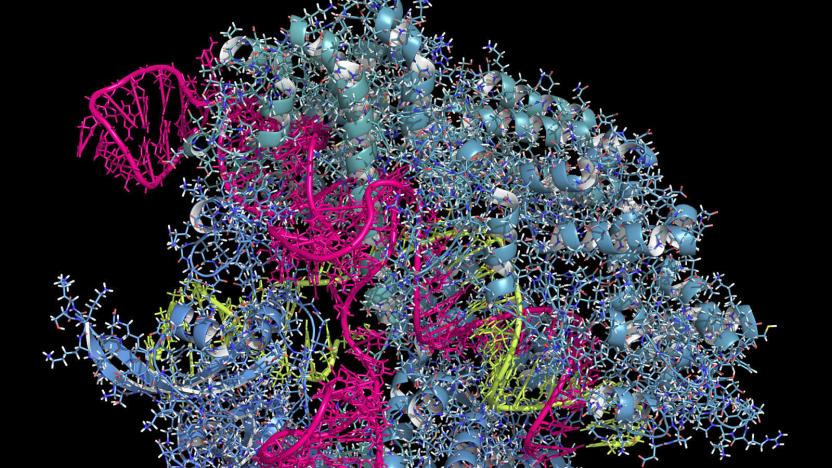
Atomic 'photos' help make gene editing safer
Believe it or not, scientists haven't had a close-up look at CRISPR gene editing. They've understood its general processes, but not the minutiae of what's going on -- and that raises the risk of unintended effects. They'll have a much better understanding going forward. Cornell and Harvard researchers have produced snapshots of the CRISPR-Cas3 gene editing subtype (not the Cas9 you normally hear about) at near atom-level resolution. They used a mix of cryo-electron microscopy and biochemistry to watch as a riboprotein complex captured DNA, priming the genes so the namesake Cas3 enzyme can start cutting. The team combined hundreds of thousands of particles into 2D averages of CRISPR's functional states (many of which haven't been seen before) and turned them into 3D projections you can see at the source link.
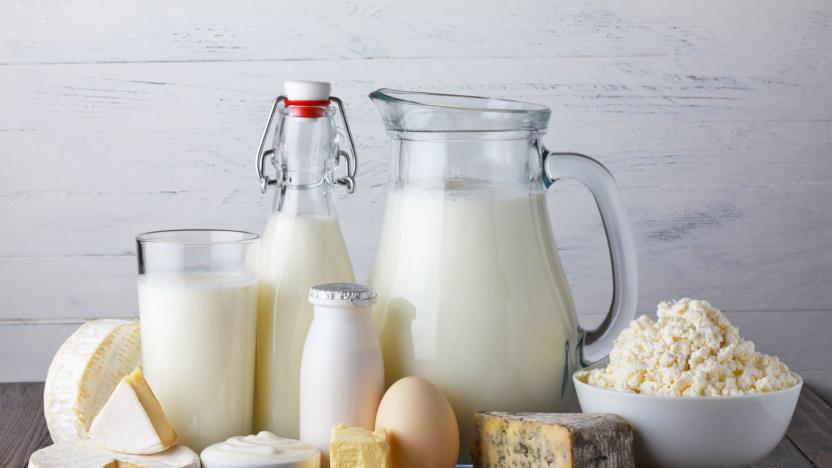
IBM-powered DNA sequencing could find bacteria in raw milk
Babies love milk. Adults love milk-based products. You know what else loves milk? Good and bad bacteria. It's the ideal medium for bacteria growth and could cause various food-borne illnesses, especially if consumed in raw, unpasteurized form. Researchers typically just test the milk supply in the US for specific pathogens or harmful bacteria and viruses, but IBM and Cornell University want to take things a step further. They plan to create new analytical tools that can monitor raw milk -- that's milk straight out of the udder -- and instantly detect any anomaly that could turn out to be a food safety hazard.
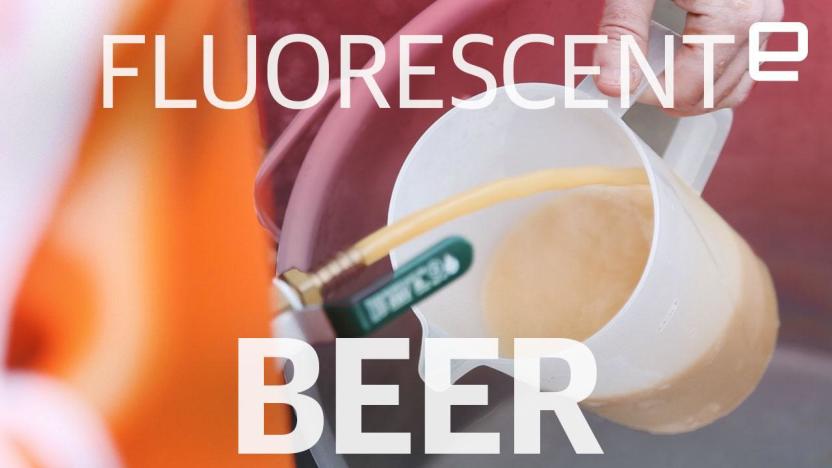
I bio-engineered glowing beer and it hasn’t killed me (yet)
I've been making beer for about 10 years and, in the name of fun and experimentation, I've done some weird stuff. Toss some sarsaparilla and birch bark in the pot? Why not? "Dry hop" with a box of Apple Jacks? Try and stop me. But I may have finally gone a bit too far, when I genetically engineered a beer to glow green. All right, so how did I do it? With a technology called CRISPR, which is pretty much the belle of the science ball right now. CRISPR stands for "clustered regularly interspaced short palindromic repeats" and it essentially lets you snip out bits of DNA and replace them with whatever you want. It actually relies on a basic feature of bacterial immune systems.

Scientists take a big step toward creating custom organisms
Scientists dream of using custom organisms to fight illnesses or even build computers, but there's a problem: it's difficult to make the sweeping genetic changes that would give you exactly the lifeform you need. To that end, researchers have found a way to rewrite "large stretches" of genomes with synthetic DNA. The team modified salmonella bacteria by using step-by-step recombineering (that is, exchanging sequences between similar pieces of DNA) to patch in yeast-grown genes that were "amplified" to boost their quality. The result was salmonella with 1,557 replacements spread across 176 genes -- a huge change for a relatively simple organism.

DNA in dirt can reveal where human ancestors lived
When you want to know where humans have lived, you typically look for direct signs like bones or buildings. But that's not always easy, especially with hominid ancestors who didn't exactly leave an abundance of remains. Thanks to a new genetic research technique, however, those obvious clues won't be necessary -- you'll just need some dirt. Scientists have discovered that they can obtain ancient DNA from soil by effectively luring it out and creating matches.
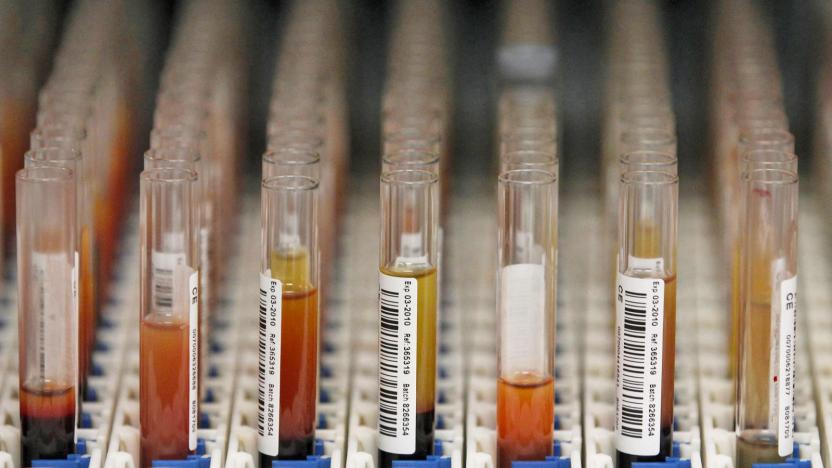
FDA clears 23andMe to warn you about potential health risks
Good news for everyone who wants to do at-home DNA tests: 23andMe has been cleared by the Food and Drug Administration to tell customers if they're at risk for 10 potentially debilitating diseases. "These are the first direct-to-consumer tests authorized by the FDA that provide information on an individual's genetic predisposition to certain medical diseases or conditions, which may help to make decisions about lifestyle choices or to inform discussions with a health care professional," the watchdog agency said in a statement. Previously, the FDA had stopped the company from offering this information back in 2013. The FDA softened its stance a bit in 2015.
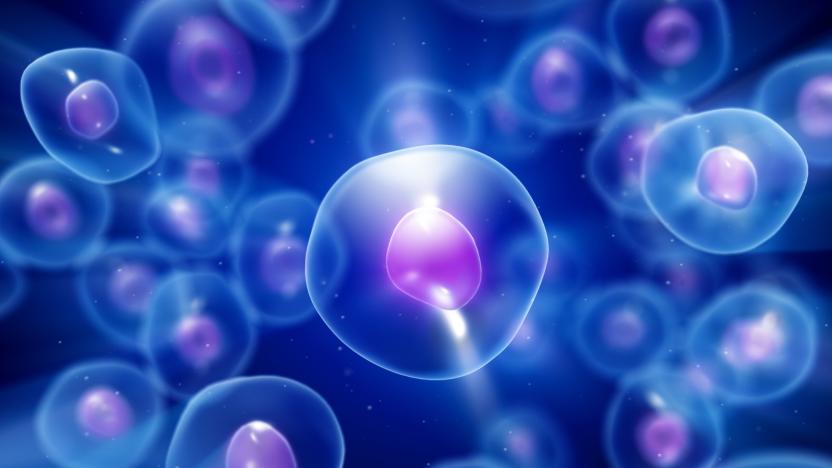
Scientists turn human kidney cells into tiny biocomputers
A team of scientists from Boston University have found a way to hack into mammalian cells -- human cells, even -- and make them follow logical instructions like computers can. While they're not the first researchers to program cells to do their bidding, previous successful studies mostly used Escherichia coli, which are much easier to manipulate. These researchers were able to program human kidney cells into obeying 109 different sets of instructions, including responding to particular environmental conditions and following specific directions.

Scientists find a low-cost way to build genomes from scratch
To put it mildly, sequencing and building a genome from scratch isn't cheap. It's sometimes affordable for human genomes, but it's often prohibitively expensive (hundreds of thousands of dollars) whenever you're charting new territory -- say, a specific person or an unfamiliar species. A chromosome can have hundreds of millions of genetic base pairs, after all. Scientists may have a way to make it affordable across the board, however. They've developed a new method, 3D genome assembly, that can sequence and build genomes from the ground up for less than $10,000.

Hard drives of the future could be made of DNA
Our data-driven society is churning out more information than traditional storage technology can handle, so scientists are looking for a solution in Nature's hard drive: DNA. A pair of researchers at Columbia University and the New York Genome Center recently wrote a full computer operating system, an 1895 French film, an Amazon gift card and other files into DNA strands and retrieved them without errors, according to a study published in the latest edition of Science.

DNA 'computers' could lead to self-activated smart pills
Imagine a pill that knew if you were ill enough to need drugs, and wouldn't release chemicals if it thought you didn't need it. That's the breakthrough that's been made at Eindhoven University in the Netherlands by a team of researchers ld by Maarten Merkx. The team has harnessed the power of DNA itself to form an organic computer that performs crude calculations on the state of your health.
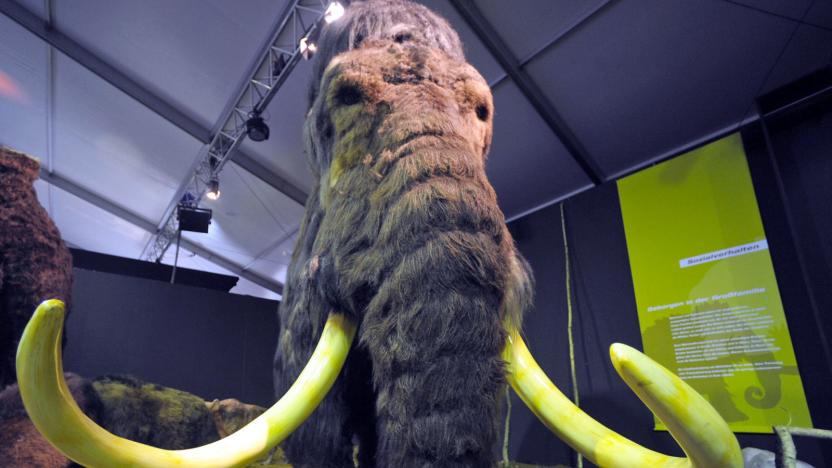
Humanity is on the cusp of de-extincting the Wooly Mammoth
After successfully extracting sequenceable DNA from a pair of Woolly Mammoth carcasses pulled from Siberia's permafrost in 2014, a team of Harvard researchers announced on Thursday that they are tantalizing close to cloning the (currently) extinct pachyderms.
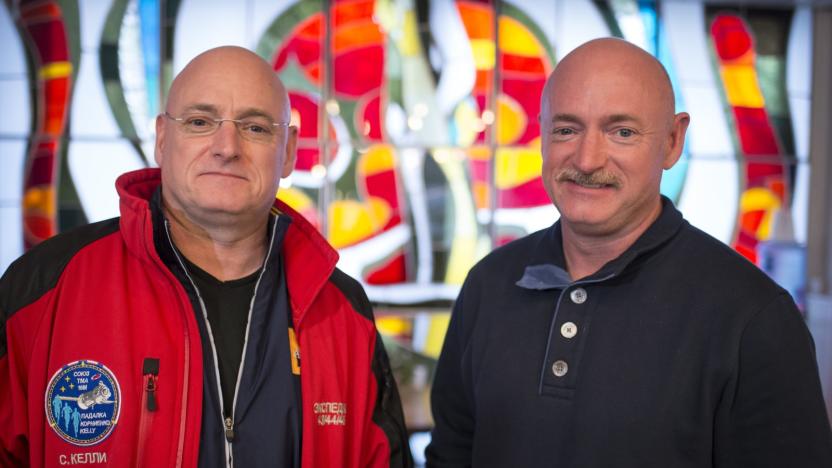
NASA studies astronaut twins to observe the rigors of space
When you spend nearly a year straight in space, you can expect NASA will want to conduct a good bit of research on you when you return to Earth. The space agency has been doing just that with astronaut Scott Kelly who was in orbit for 340 days. There's no one better to compare Kelly to than his twin brother and fellow astronaut Mark. NASA collected blood and other biological samples to look for any changes a long spaceflight may cause in the human body.









